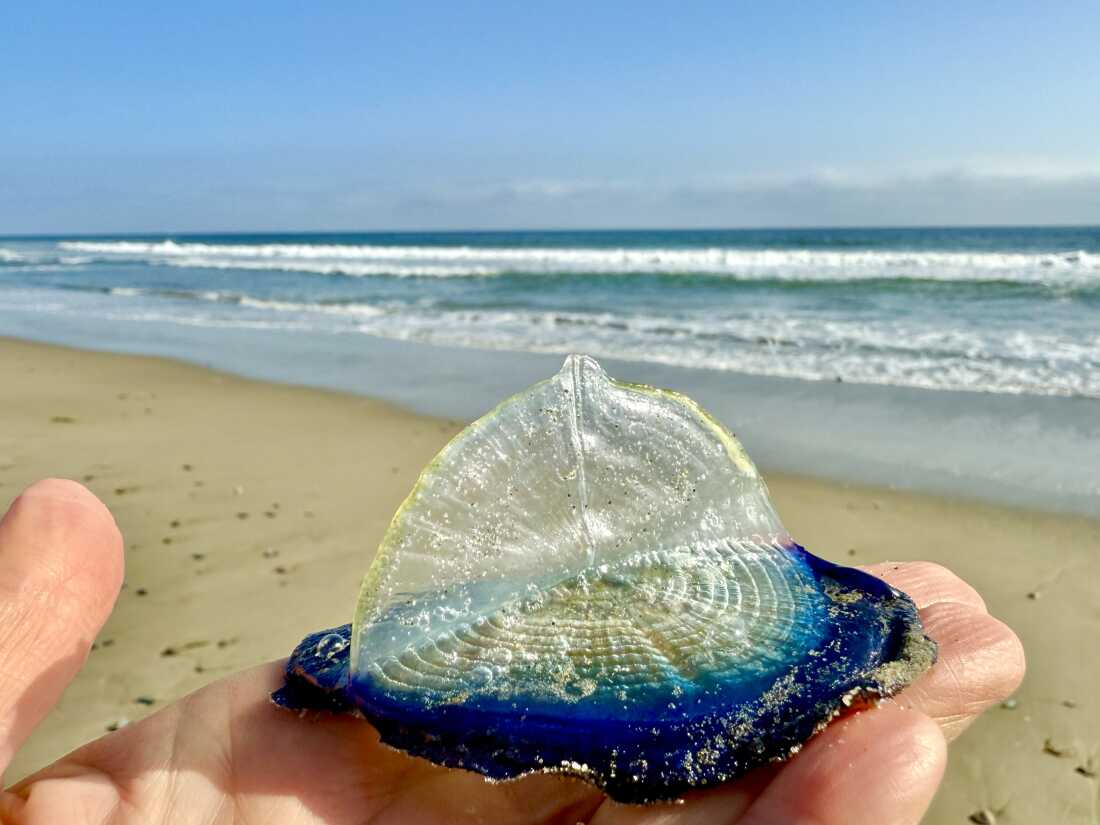Executive Summary
- Mass strandings of Velella velella are occurring on California beaches due to wind shifts during the spring transition.
- Velella velella are harmless to humans, despite being related to jellyfish and Portuguese man o' war, causing only minor skin irritation.
- Recent research suggests a possible link between increased Velella velella strandings and rising sea surface temperatures.
Event Overview
California beaches are experiencing mass strandings of Velella velella, also known as by-the-wind sailors. These small, blue, gelatinous creatures are typically found on the open ocean but are being pushed ashore by changing wind patterns. While their appearance is visually striking, experts note that such events are common during the spring transition and may be influenced by larger environmental factors like rising ocean temperatures.
Media Coverage Comparison
| Source | Key Angle / Focus | Unique Details Mentioned | Tone |
|---|---|---|---|
| NPR | The appearance of Velella velella on California beaches and the reasons behind their mass strandings. | Includes comments from photographer Emily Scher, who observed tens of thousands of Velella velella, and Matthew Bracken, a professor of ecology and evolutionary biology at UC Irvine, who explains the wind patterns and potential link to rising ocean temperatures. Reports that Velella velella are actually colonies of hydrozoa. | Informative and slightly awed. |
Key Details & Data Points
- What: Mass strandings of Velella velella, also known as by-the-wind sailors, on California beaches.
- Who: Emily Scher (photographer), Matthew Bracken (UC Irvine professor), beachgoers, Velella velella (creatures).
- When: Observed recently, part of the spring transition (April onwards), with strandings possibly linked to sea-surface temperatures during the previous winter.
- Where: California beaches, from San Diego to Santa Barbara, specifically between Zuma and Broad beaches in Malibu.
Key Statistics:
- Key statistic 1: Velella velella can grow up to 4 inches long.
- Key statistic 2: Tens of thousands of Velella velella were observed on a stretch of more than a dozen miles of beach.
- Key statistic 3: Velella velella are related to sea anemones, corals, hydroids and jellyfish.
Analysis & Context
The mass strandings of Velella velella on California beaches are a recurring natural phenomenon influenced by seasonal wind shifts. While visually striking, they are not inherently dangerous to humans. The potential link to rising ocean temperatures raises concerns about the long-term impacts of climate change on marine ecosystems, warranting further investigation.
Notable Quotes
They looked like blue diamonds strewn across the beach. It was like these gems, and they're so brilliant blue.
It's almost like a wave that starts in the north and moves toward the south as the system transitions to predominantly onshore-type winds. And when that happens they get blown and then they get stranded.
Conclusion
The mass appearance of *Velella velella* on California beaches, driven by specific wind and current patterns, is further influenced by rising ocean temperatures, suggesting a complex interplay of factors. This phenomenon highlights the potential impacts of climate change, with warmer winter sea surface temperatures correlating to increased *Velella* strandings. The *Velella's* life cycle and sensitivity to environmental changes position it as an indicator species, offering insights into broader marine ecosystem shifts. While these strandings might appear as isolated aesthetic events, they could signal significant alterations in ocean conditions and food web dynamics, potentially impacting fish populations and other marine life. Ongoing research and monitoring, coupled with citizen science initiatives, are essential to unraveling the long-term ecological consequences and understanding how these events reflect the accelerating impacts of climate change on coastal environments.
Disclaimer: This article was generated by an AI system that synthesizes information from multiple news sources. While efforts are made to ensure accuracy and objectivity, reporting nuances, potential biases, or errors from original sources may be reflected. The information presented here is for informational purposes and should be verified with primary sources, especially for critical decisions.









